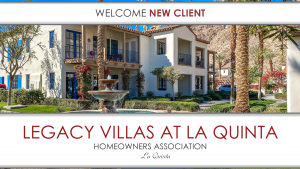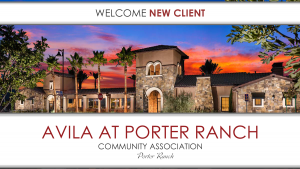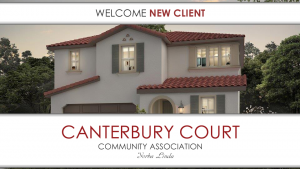 *Asked and Answered
*Asked and Answered
Asked – We recently concluded our Annual Meeting of the Membership. As always, we failed to achieve quorum. Rather than successively adjourn and reconvene the meeting, the Board concluded the meeting. Now we have several owners complaining, saying that the proper procedure was not followed when the Board concluded the meeting. What is the proper procedure?
Answered – It is not uncommon for an association to suffer from “member apathy.” Such apathy is most commonly apparent when it comes time to hold the association’s annual membership meeting (“Annual Meeting”). In order to hold an Annual Meeting (or a special meeting of the members (“Special Meeting”)), a quorum of the membership must be present in person, by written ballot, or, if allowed by the association’s Bylaws, by proxy. Quorum requirements vary.
If a quorum is present, the members may convene the Annual or Special Meeting and conduct the business at hand. If a quorum is not present, the members present at the Annual or Special Meeting have two options: (1) adjourn the meeting, or (2) adjourn the meeting to a later date. The word “members” is emphasized in the preceding sentence to highlight the fact that an Annual or Special Meeting is a meeting of the members. Thus, while the Board president may preside over the meeting, and other Board members may be present, the decisions made thereat are made by the members, not the Board.
The appropriate procedure for adjourning an Annual or Special Meeting is usually set forth in the association’s Bylaws. Nevertheless, California Corporations Code section 7512(d) states that, “[i]n the absence of a quorum, any meeting of members may be adjourned…by the vote of a majority of the votes represented either in person or by proxy….” (Emphasis added.) Thus, the following procedure should be employed:
- The “chair” of the Annual or Special Meeting (again, typically the Board president) calls the meeting to order.
- An announcement is made that quorum was not reached and therefore the association is unable to hold the meeting.
- The chair of the Annual or Special Meeting then entertains motions made by members present at the meeting.
If no motion is made and everyone simply leaves, the matter is concluded; no further action may be taken on the item or items of business for which the meeting was called (unless a Special Meeting is called for that purpose). If a member makes a motion to adjourn, and the motion carries (i.e., a majority of the members present approve the motion), the matter is concluded. The meeting will not be adjourned to a later date. This is because the motion did not specially call for the meeting to be reconvened at a later date. Thus, in order to reconvene the meeting at a later date, a majority of the members present must move to adjourn the meeting to a later date.
It is important to point out that neither the Board nor the managing agent has the authority to unilaterally adjourn the meeting to a later date. For example, when quorum is not achieved, the Board cannot simply establish a date for a reconvened meeting; the decision must be made by the members through a proper motion. Moreover, it is not uncommon for the association’s managing agent and Inspector of Election to be the only persons present at the meeting. Again, neither the managing agent nor the Inspector of Election has the authority to adjourn the meeting to a later date (that is unless the managing agent or Inspector of Election is also a member of the association). It is for this reason that we always recommend that at least one Board member be present at the meeting so that the proper motion can be made. Reconvening the meeting without a proper motion will make any decisions made at said meeting subject to legal challenge.
It is also important to point out that the association cannot correct this deficiency by distributing notice to the membership of the new meeting date. That is because the motion to adjourn to a later date is a procedural prerequisite; meaning, the motion must occur in order to the hold the meeting in the future. Thus, if the association desires to move forward with the Annual or Special Meeting, and the motion was not properly made (or made at all) it will need to restart the process.
 |
Conducting Annual and Special Meetings is important to the effective operation of the association. However, it is equally important that the proper procedure is followed, especially when adjourning meetings. Failure to do so increases the potential for costly disputes. |
-Blog post authored by TLG Attorney, Matthew T. Plaxton, Esq.
 In case you missed it, Issue #53 of our ‘Community Association Update’ newsletter is available now!
In case you missed it, Issue #53 of our ‘Community Association Update’ newsletter is available now! HOA Lawyer Blog
HOA Lawyer Blog


 *Asked and Answered
*Asked and Answered It’s our privilege to welcome Park 72 Homeowners Association to Tinnelly Law Group’s growing family of HOA clients.
It’s our privilege to welcome Park 72 Homeowners Association to Tinnelly Law Group’s growing family of HOA clients. It’s our privilege to welcome Legacy Villas at La Quinta Homeowners Association to Tinnelly Law Group’s growing family of HOA clients.
It’s our privilege to welcome Legacy Villas at La Quinta Homeowners Association to Tinnelly Law Group’s growing family of HOA clients. *Asked and Answered
*Asked and Answered It’s our privilege to welcome Casalon Community Association to Tinnelly Law Group’s growing family of HOA clients.
It’s our privilege to welcome Casalon Community Association to Tinnelly Law Group’s growing family of HOA clients. Association to Tinnelly Law Group’s growing family of HOA clients.
Association to Tinnelly Law Group’s growing family of HOA clients.
 It’s our privilege to welcome Parkside Heights Owners Association to Tinnelly Law Group’s growing family of HOA clients.
It’s our privilege to welcome Parkside Heights Owners Association to Tinnelly Law Group’s growing family of HOA clients. It’s our privilege to welcome Canterbury Court Community Association to Tinnelly Law Group’s growing family of HOA clients.
It’s our privilege to welcome Canterbury Court Community Association to Tinnelly Law Group’s growing family of HOA clients.